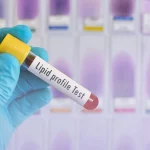
Key facts
- Cholesterol is a type of fat needed to build and repair cells and to make hormones.
- Cholesterol is made in your liver but is also present in some foods.
- There are different types of cholesterol — including LDL cholesterol and HDL cholesterol.
- Over time, too much LDL cholesterol (or, ‘bad’) cholesterol in your blood can raise your risk of heart attack and stroke.
- You can lower high cholesterol by making lifestyle changes and often through medicines.
What is cholesterol?
Cholesterol is a type of fat which is needed by your body to build and repair cells and to make hormones. Your liver makes cholesterol, and some foods contain it.
There are different types of cholesterol, and each is named after the different proteins that carry cholesterol in the blood. The key ones are:
- LDL cholesterol (low-density lipoprotein cholesterol) — known as ‘bad’ cholesterol
- HDL cholesterol (high-density lipoprotein cholesterol) — known as ‘good’ cholesterol
High cholesterol is common among Australians — 1 in 3 adults has high cholesterol. Over time, having too much ‘bad’ cholesterol causes fatty deposits called plaques to form in the walls of the arteries. This leads to a narrowing and hardening of the arteries, which increases the risk of heart attacks and stroke.
How do I know if I have high cholesterol?
Many Australians don’t know they have high cholesterol, because there are no symptoms. High cholesterol can only be detected through a blood test.
Some people have a condition called familial hypercholesterolaemia — where a genetic problem leads to high cholesterol. About one in 500 Australians has this condition and many don’t know they have it. If you have a family history of high cholesterol or of heart disease at a young age, ask your doctor about your risk.
How is cholesterol measured?
Cholesterol is measured using a blood test called a ‘lipid profile’. This measures total cholesterol, HDL cholesterol and LDL cholesterol, as well as triglycerides — another type of fat in the blood. You will normally be asked to fast (not eat anything) and only drink water for about 10 hours before the test.
How often should I have my cholesterol tested?
Adults should have their blood lipids measured every 5 years, starting at 45 years. Aboriginal and Torres Strait Islander people should start lipid blood tests at 35, because on average heart and blood vessel disease — such as heart attacks and stroke — happen 10 to 20 years earlier in Indigenous people.
All Australians in these age groups are eligible for a regular 20-minute heart health check with their doctor. This checks your blood pressure, cholesterol and blood sugar levels. Your doctor can then assess your risk of having a heart attack or stroke in the next 5 years.
What are the risks linked to high cholesterol?
Too much LDL (bad) cholesterol in the blood can increase your risk of heart and blood vessel disease (cardiovascular disease).
The excess LDL cholesterol leads to fatty deposits called plaque forming in the artery walls. Over time, the plaque causes narrowing and hardening of the arteries (known as atherosclerosis).
This can lead to:
- Angina — when plaque builds up in the major arteries that supply your heart, known as the coronary arteries, they become narrower and are partially blocked, reducing blood flow and oxygen supply to the heart. This may cause shortness of breath and chest pain.
- Heart attack — if a plaque in a coronary artery bursts (ruptures), a clot may form and block the supply of blood to the heart, starving it of oxygen.
- Stroke — if the blood vessels that supply the brain become narrower or blocked by plaque, blood supply to the brain can be severely reduced or cut off, causing a stroke. Strokes can also be caused when a clot from another part of the body travels through the blood and lodges in an artery in the brain.
- Peripheral vascular disease — this usually affects the arteries that supply the legs and feet, causing leg pain when walking (known as intermittent claudication), and even pain when resting, when the circulation is more badly affected
A high level of HDL cholesterol is good because HDL cholesterol helps remove other forms of cholesterol from the blood, taking them back to the liver — where they’re removed from the blood and passed out of the body.
How can I lower my cholesterol by making lifestyle changes?
You can lower your cholesterol levels by making lifestyle changes, and through taking medicines if that’s what your doctor advises. Some people will only need to improve their lifestyle and diet to get their cholesterol to a safe level. Others may need to take cholesterol-lowering medicines, as well.
Reduce your intake of saturated and trans fats
Adopt and follow a healthy diet that’s low in saturated and trans fats. A diet high in these fats can raise levels of LDL cholesterol in the blood.
Saturated fat is usually solid at room temperature. It’s found in animal products such as meat and dairy, but also in palm oil, coconut oil and full-cream milk.
Trans fats (or, trans fatty acids) are found in store-bought baked goods, snack foods and deep-fried foods. There is strong evidence that trans fats increase levels of LDL cholesterol in the blood, while decreasing levels of HDL (good) cholesterol.
Some foods contain cholesterol (known as ‘dietary cholesterol’). Foods that contain cholesterol include liver, pate, kidneys, prawns and egg yolks. These types of food are not usually eaten in large quantities, so it’s OK to include them in your diet in small amounts.
Foods that contain saturated fats have a greater effect on blood cholesterol levels than foods that contain dietary cholesterol.
Replace saturated fats with healthier fats
Replacing foods that contain mainly saturated fats with foods that contain unsaturated fats — such as polyunsaturated and monounsaturated fats — will help reduce your cholesterol level.
For example, instead of butter and cream in cooking, use olive oil, nut butters or avocado.
Healthy unsaturated fats are found in:
- nuts (such as almonds and walnuts)
- olives
- oily fish (for example, salmon and sardines)
- avocado
- seeds (flaxseeds, sunflower seeds, chia seeds)
- oils made from plants and seeds (olive oil, peanut oil, canola oil, soybean oil)
Eat more soluble fibre
Soluble fibre can reduce the absorption of cholesterol into your blood and it slows down digestion, making you feel fuller for longer. Foods that are high in soluble fibre include:
- oats
- lentils, peas and beans
- psyllium
- barley
- fruits and vegetables (such as apples and carrots)
Consume plant sterols
Plant sterols are compounds that can lower LDL cholesterol. They occur naturally in plants, fruits, vegetables, nuts and grains and are added to some packaged foods, such as table spreads, cereals, low-fat yoghurt and low-fat milk.
Plant sterols that occur naturally in foods are only present in small amounts, compared with plant sterols that are added to foods. Consuming 2 to 3 grams of certain plant sterol-enriched foods daily has been shown to lower LDL cholesterol by around 10%.
Adding plant sterol-enriched foods to your diet is the most effective dietary change you can make to reduce your LDL cholesterol. However they’re not recommended for pregnant or breastfeeding women.
Increase your physical activity
Physical activity increases levels of HDL cholesterol — the ‘good’ cholesterol that removes LDL cholesterol from the blood. Vigorous aerobic exercise is best.
If you haven’t been exercising much lately, gradually build up to the recommended amount of physical activity:
- People aged 18-64 years should do 30 to 60 minutes of moderate-intensity physical activity on most days of the week.
- People aged 65 years and over should aim for a total of 30 minutes of moderate physical activity on most days (10 minutes at a time, for example, is OK).
Moderate-intensity exercise is a level that increases your heart rate and breathing but allows you to keep talking. Vigorous intensity exercise makes your heart rate higher and makes you breathe more heavily.
Resistance training (using weights, resistance bands or your own body weight) and muscle-toning exercises can increase HDL cholesterol. Aim to do this twice a week.
Reduce your weight if overweight
If you are obese or overweight, losing weight can help reduce your levels of LDL cholesterol and triglycerides, while increasing your levels of HDL cholesterol.
Limit your alcohol intake
Alcohol can increase your levels of triglycerides. Along with LDL cholesterol, high levels of triglycerides raise your risk of heart disease.
Excess alcohol consumption also increases blood pressure and can lead to obesity (due to the kilojoules in alcohol) — both additional risk factors for heart disease.
To reduce the risk of heart disease and other risks from alcohol, limit your intake to no more than 10 standard drinks per week and no more than 4 drinks per day.
Quit smoking
Smoking reduces HDL cholesterol and speeds up the rate at which fatty plaques form in the walls of your arteries. It also makes your blood more likely to clot. These factors increase your risk of heart attack and stroke. Stopping smoking is one of the best ways to improve your heart and blood vessel health.
Your doctor can help you quit smoking. You can also call the Quitline on 13 7848 to talk to a counsellor, or use its online chat service. Aboriginal Quitline can also support Aboriginal and Torres Strait Islander people who smoke.
How can I lower my cholesterol with medicines?
As well as making lifestyle changes, some people will need to take cholesterol-lowering medicines to reduce their risk of heart and blood vessel disease, known as cardiovascular disease. The medicines most commonly used are called statins.
Your doctor will consider all your risk factors for cardiovascular disease before suggesting medication — not just your cholesterol and lipid results. If you’ve already had a heart attack or stroke, taking statins can substantially lower your risk of having another one.
Statins work by slowing the amount of cholesterol made in your liver. In response, your liver uses the cholesterol already in your blood to make up for the deficit. This lowers the level of LDL cholesterol in your blood.



